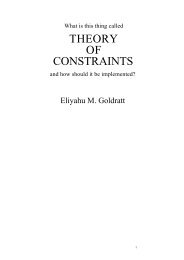Making of a German Constitution : a Slow Revolution
Making of a German Constitution : a Slow Revolution
Making of a German Constitution : a Slow Revolution
Create successful ePaper yourself
Turn your PDF publications into a flip-book with our unique Google optimized e-Paper software.
154 • The <strong>Making</strong> <strong>of</strong> a <strong>German</strong> <strong>Constitution</strong>the BGBS’s marital property provisions and who made up the majority <strong>of</strong> Saxony’sindustrial workers.Impact <strong>of</strong> Unification on <strong>Constitution</strong>al TransformationThe legal reformations that were already taking place at the state level informed thedevelopment <strong>of</strong> the national legal system after <strong>German</strong> unification. This is importantbecause historians have argued that Otto von Bismarck redirected nationalist andliberal momentum by securing unification under the Prussian flag, and the Reich <strong>Constitution</strong><strong>of</strong> 1871 has long been criticized for the conspicuous absence <strong>of</strong> basic rightsprovisions. It is useful, however, to distinguish between geographical unification andstructural unification, which was still a pressing question that demanded an answer.Shortly after the founding <strong>of</strong> the North <strong>German</strong> Confederation in 1866, a politicalcartoon under the title ‘Something is rotten in the State, etc’ appeared. The cartoondepicts the front and back sides <strong>of</strong> a peacock’s feathers. On the front, it shows the variousstates in the North <strong>German</strong> Confederation fanned on the peacock’s tail. On theback side, however, it shows an array <strong>of</strong> pressing legal questions. The caption reads: ‘Itlooks magnificent from the front, but when you get to the bottom <strong>of</strong> it—Oh dear!’ 163Rather that focusing on Prussianization, in fact, scholars should give muchgreater consideration to the fact that Prussia not only annexed states where constitutionaltransformation was making considerable inroads, but populations <strong>of</strong> veteranlegal liberals and constitutional transformationists. This is particularly importantwith regard to Hanover. Paradoxically, given the complicated structural disunity thatresulted from unification, liberal legislation was the only tool available for such amonumental task as structurally unifying the new Reich, and, this reality, as Frensdorffwrote, was not lost on Gottlieb Planck. 164 More biographical information aboutGottlieb Planck is <strong>of</strong>fered in Chapter 7, but, for now, it will suffice to emphasize thehe emerged as one <strong>of</strong> the most active Hanover liberals <strong>of</strong> the mid century.The Hanover Prozeßordnung <strong>of</strong> 1850 was made possible by the Verfassungsgesetz<strong>of</strong> 1848, which restored the key provisions <strong>of</strong> the Staatsgrundgesetze <strong>of</strong> 1833.Ernst August, however, hastily gave back the constitution to save his own neck duringthe upheaval <strong>of</strong> 1848, and, as soon as the danger cleared, he was again preparedto renege, this time, on the 1848 Verfassungsgesetz. However much the Prozeßordnungwas celebrated in Central Europe and it represented advance, its introductionwas followed the same year by the king’s dismissal <strong>of</strong> the liberal ministry. A bitterconstitutional struggle erupted just before his death in November <strong>of</strong> 1851. The newKing, George V, shared his father’s reactionary political views and, from the start <strong>of</strong>his reign, he set out to kill the Verfassungsgesetz. While he faced strident resistancefrom the second chamber, he ultimately won his appeal to the <strong>German</strong> Confederationin the Bundesbeschlüsse <strong>of</strong> 12 and 19 April 1855, which declared the Verfassungsgesetz<strong>of</strong> 1848 invalid. George V then restored the hated Landesverfassungsgesetze <strong>of</strong>




